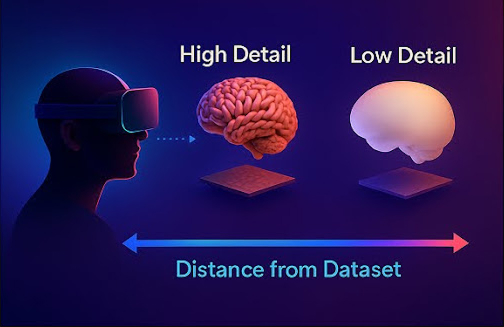1.8 Quality settings
Learn how to adjust quality settings and improve performance on both PC-VR
and standalone devices. 3D DICOM data is volumetric - so the larger you
scale it or the closer you get in VR, the more processing power your
device needs. Only the models and data in your field of view are rendered.
Below, we show you how to optimize DICOM visualization for better
performance on your VR system.
1.8.1
Medical imaging settings in Medicalholodeck
Quality settings help balance performance and visual clarity. If
your device slows down with large and numerous files, lowering
the quality can help it run more smoothly.
You can adjust quality settings for each individual model. Look
for quality for volumes and data resolution at the bottom of the
Medical Imaging XR panel, numbers 6 and 7. Use the quality for
volumes slider to adjust the density of the volume. Select the
data resolution setting to choose between low, medium, or high
texture quality.
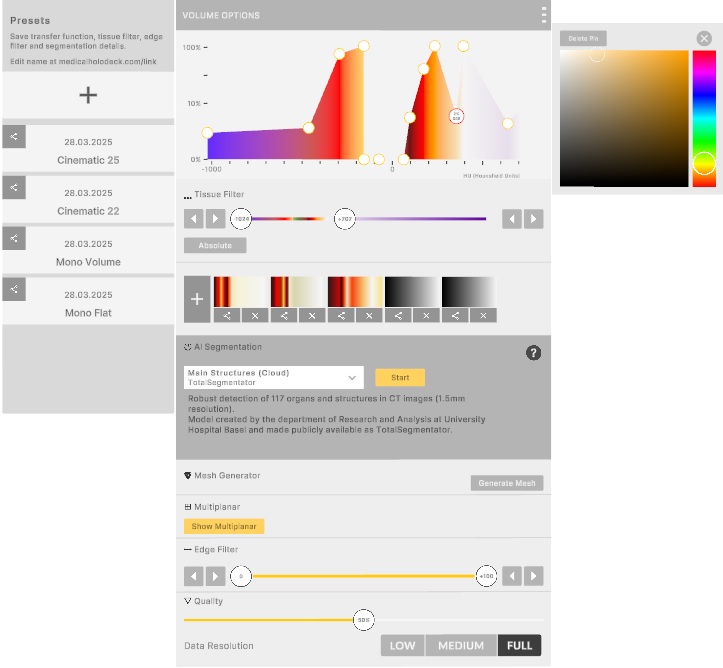
Note that quality settings above 50% offer only small visual
improvements but require significantly more performance.
You can set default rendering options in the settings panel on
the left. These apply when loading a new model.
Medicalholodeck’s recommended defaults are 10–14% volume quality
and medium resolution for headsets, and 50% volume quality with
full resolution for PCs.
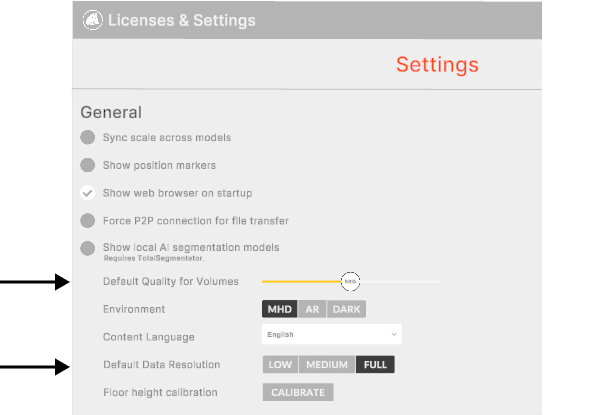
1.8.2
Low framerate screen
You can keep an eye on your device's performance by checking the frames per second (FPS), shown in the top-right corner of the object pad. It shows how many images your device displays each second - higher FPS means smoother motion in VR.

If the FPS drops below 10, a low FPS warning screen will appear to help protect your device. This gives your system a chance to recover and avoid becoming unresponsive or overheating. It’s also a sign that you may need to lower the rendering quality. This screen isn’t just a warning - it’s there to help prevent crashes and keep everything running smoothly.
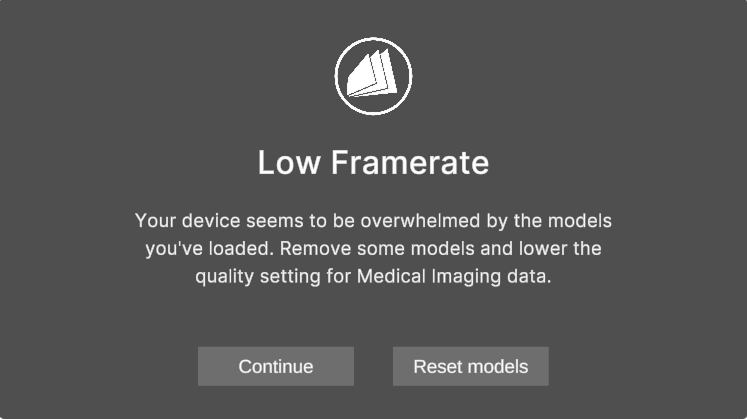
When this screen appears, you can:
- Continue if your device can handle it.
- Reset the workspace to remove all loaded data.
Then, adjust your quality settings to optimize performance.
1.8.3
About 3D DICOM files
Data resolution
In volumetric imaging, resolution controls how sharp and detailed each slice appears. Users can manually select between low, medium, and high texture versions, depending on their performance needs and visual preferences.
Volumetric quality
The volume quality slider controls how much of the dataset is actively used during rendering:
- 50% Setting: Uses all key slices from the original DICOM dataset, balancing performance and visual quality.
- Above 50%: Uses more slices from the dataset for slightly better image quality, but the improvements are minimal and require significantly more performance.
- Below 50%: Fewer slices are used, reducing visual precision but improving performance.
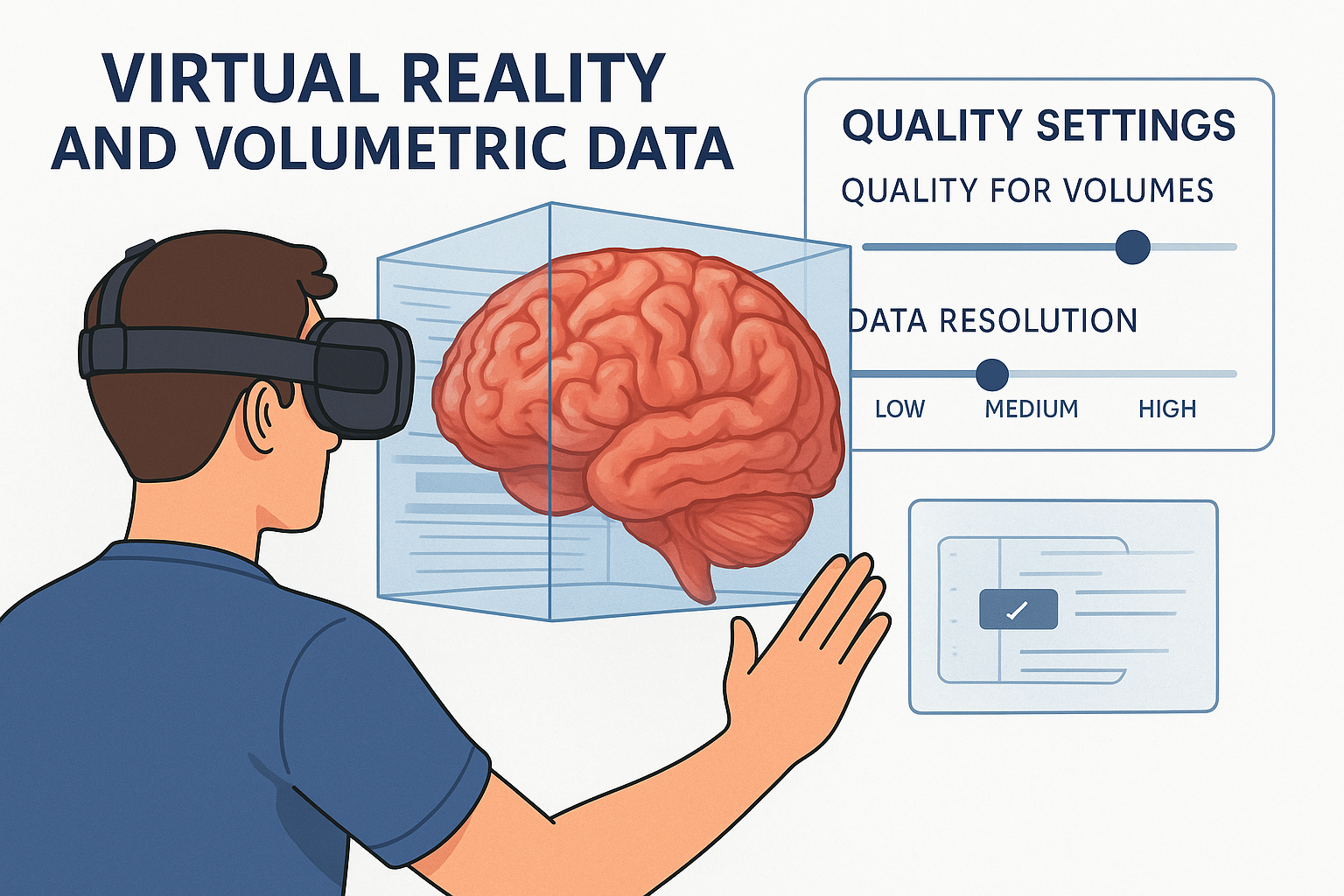
What is volumetric data?
Volumetric data represents 3D anatomical structures by stacking 2D image slices, typically obtained through CT or MRI scans. Each slice captures a thin cross-section of the body at specific intervals. When combined these slices form a full 3D volume. These datasets are usually stored in the DICOM format, which includes both the images and the metadata needed to interpret them properly.
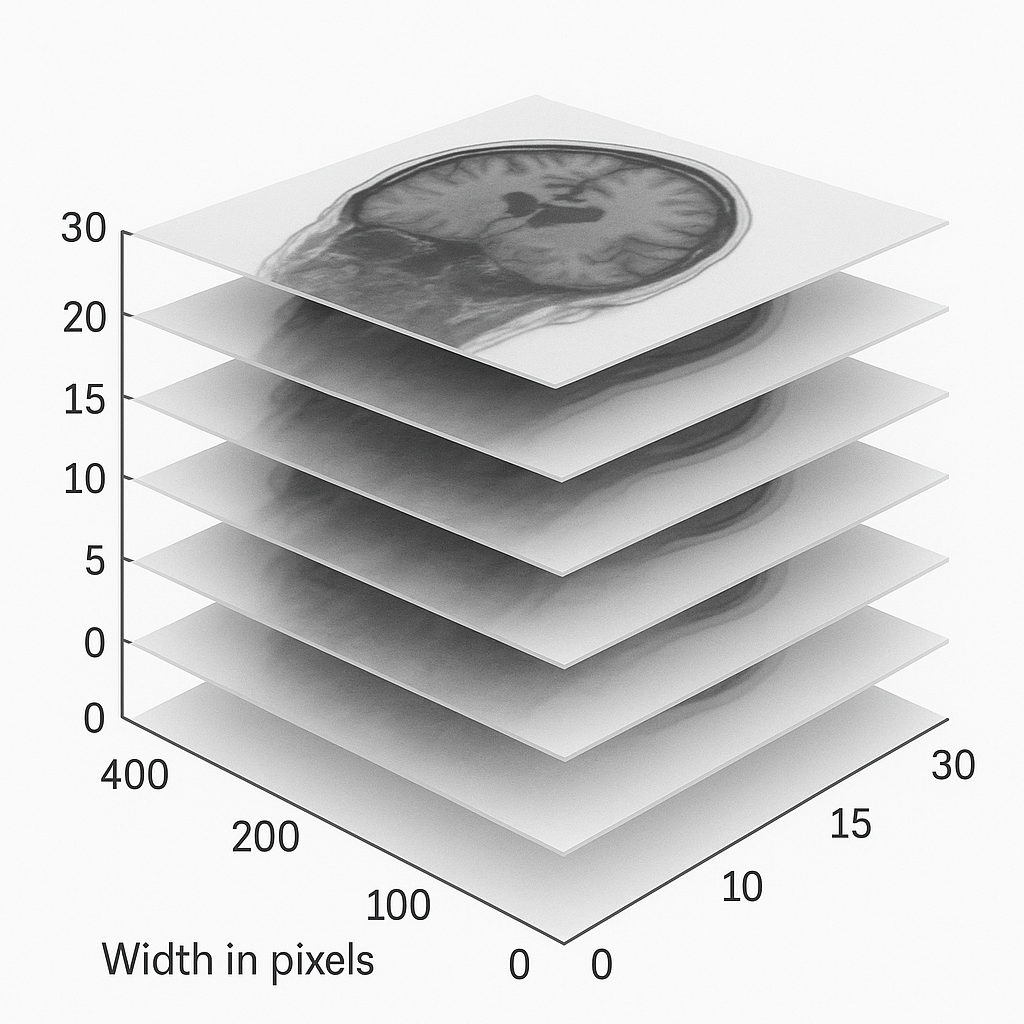
1.8.4
From slices to 3D visualization: processing and texturing
Visualizing volumetric data in VR involves sophisticated processing techniques. Texture maps are applied to each 2D slice, and algorithms interpolate between them to generate a smooth, continuous 3D representation. The more slices included-and the higher their resolution-the more detailed the final rendering. However, this increased fidelity comes with a computational cost.
Processing involves two key factors:
- Slice density: The number of slices in a dataset.
- Texture resolution: The visual clarity of each slice.
Together, these determine how “complete” and realistic the 3D volume appears. A denser dataset with high-resolution textures offers more anatomical detail but requires more GPU and CPU power to render.
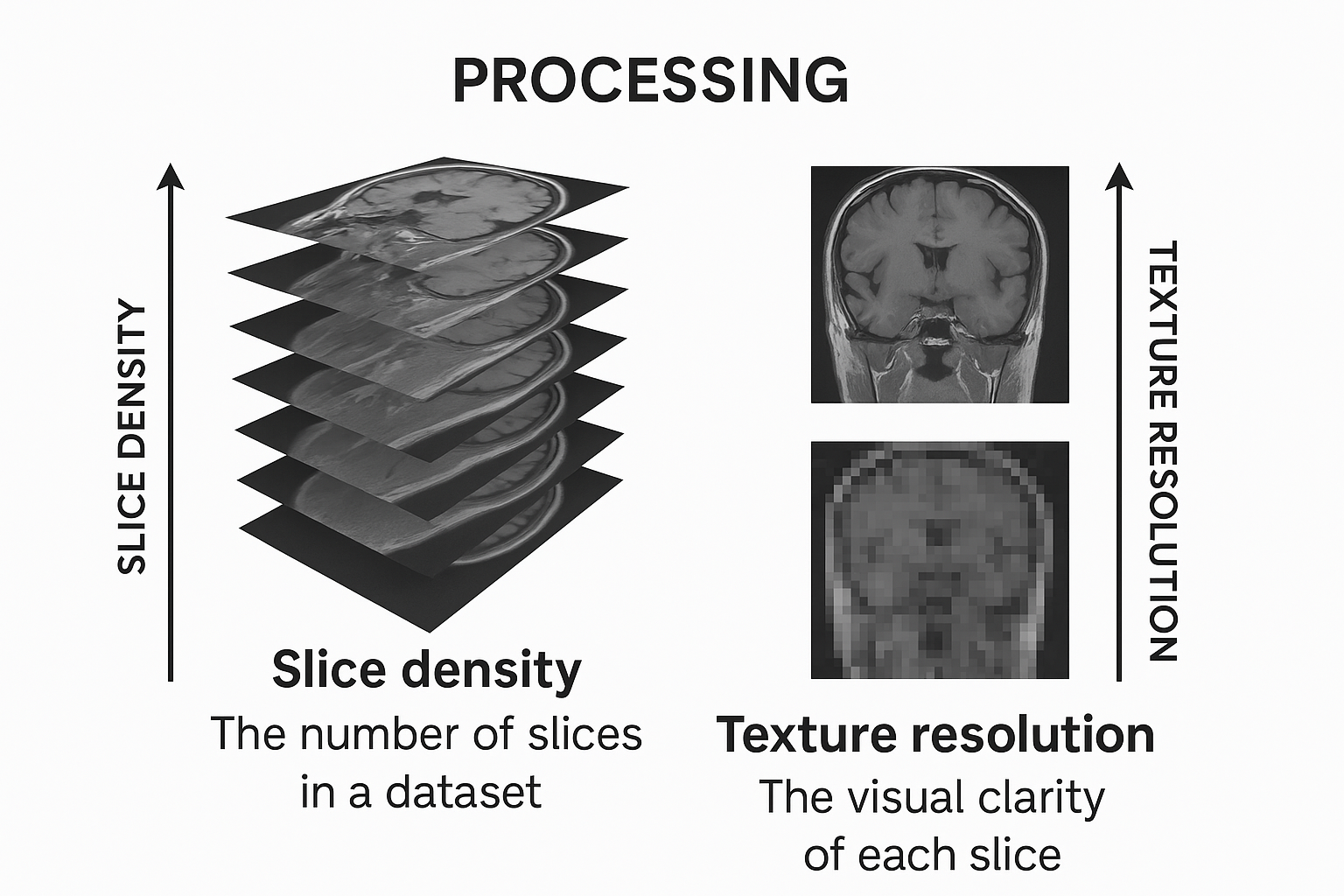
1.8.5
Challenges with large datasets in VR
Unlike conventional 2D image viewing, real-time 3D rendering in VR must maintain high frame rates (ideally 60 FPS on a PC, 30 on a standalone headset) to prevent motion sickness and ensure a smooth experience. Large volumetric datasets, while visually impressive, can overwhelm hardware if not managed properly. The larger the dataset - in physical dimensions, not just file size - the more processing power is required to render it effectively. This is where smart optimization and quality settings become essential.
1.8.6
Adaptive detail rendering
To balance performance with visual quality, VR systems use level of detail (LOD) techniques that adjust rendering based on the user’s distance from the dataset. When the user is close, the system displays high detail; when farther away, it switches to lower-resolution textures, since fine details aren’t noticeable at a distance. This approach preserves meaningful content while optimizing performance.
